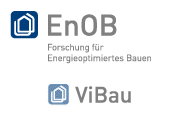Vacuum insulation panels: Prerequisites
Vacuum insulation panels are generally made of a load-bearing, open-pored
and therefore evacuable core, sealed into a sufficiently gas-tight envelope
(cf. Assembly). They therefore have the following
characteristics:
Predetermined sizes: Vacuum insulation panels cannot be cut
to size or drilled through. Where possible, VIPs should be selected in uniform
or standardized sizes. Manufacturing customized VIPs is more costly and time-consuming.
Sensitive envelope: To maintain the vacuum within the panel,
the envelope must not be damaged. VIPs therefore have to be produced and installed
with particular care and caution, especially VIPs with foil envelopes. VIPs
should be protected when being installed to prevent unintentional damage.
Thermal bridges: Since vacuum insulation panels have an extremely
small thermal conductivity, even calm, non-convecting air in the gaps between
the VIPs causes thermal bridging. Even more pronounced bridging effects result
from the presence of any material (particularly metal) between the VIPs (for
instance mounting aids). Facade systems involving vacuum insulation panels
therefore have to be very carefully planned in order not to compromise the
excellent insulating performance of VIPs through thermal bridges (cf. Edge
effects).


